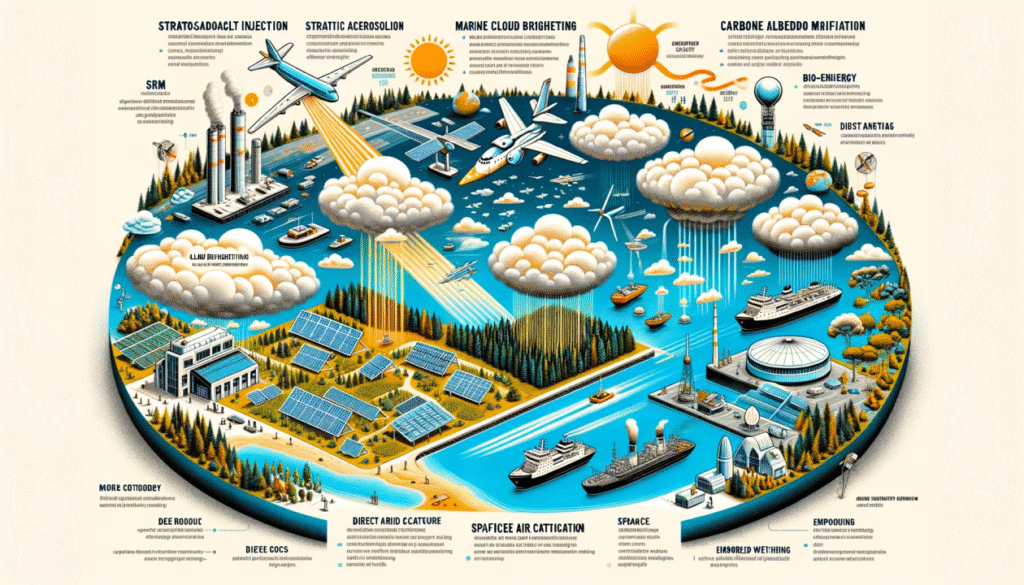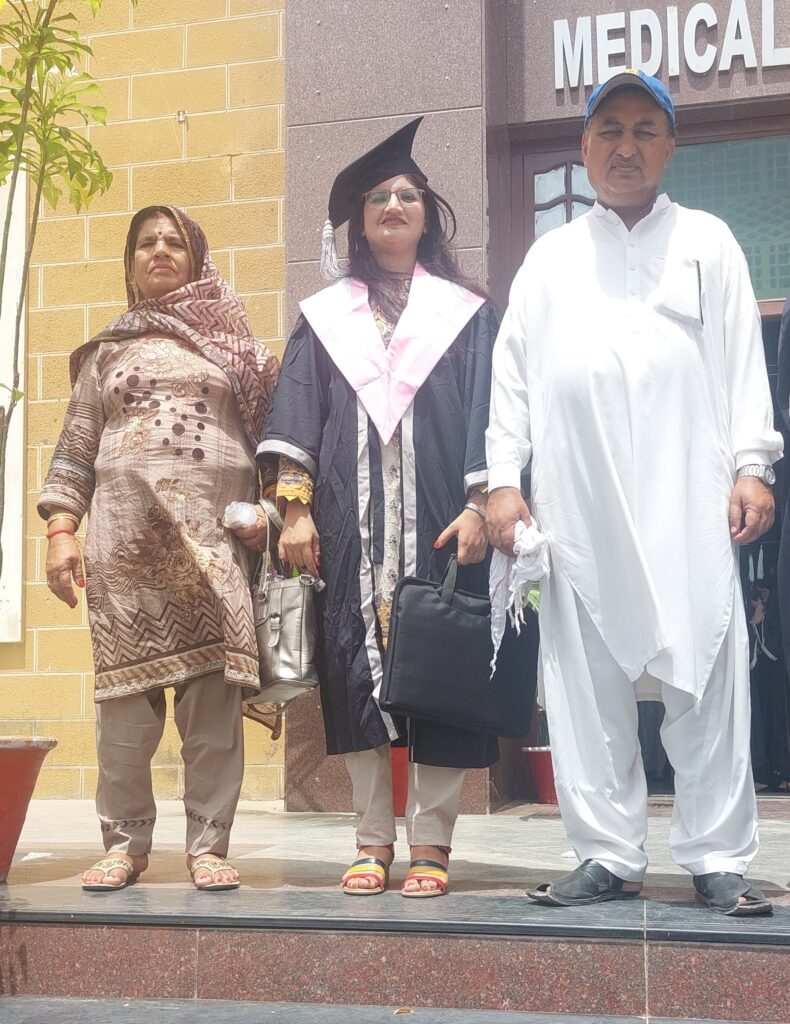
Climate Change: Unlocking Hope Through Collective Action
One of the biggest problems facing us now is climate change, which requires immediate and ongoing action. Rising global temperatures lead to an increase in extreme weather events, sea level rise, and biodiversity loss(Khadka et al., 2023; Poudel et al., 2025). Even with these obstacles, clean energy options have captured the attention of everyone, states as a major source of energy for lowering carbon dioxide emissions release of pollutants into the environment. The engineering industry is critical in creating remedies that reduce these impacts and promote resilience and sustainability. The subject of this blog is how technological breakthroughs aid in the fight against climate change, in accordance with Sustainable Development Goal 13.
Recent developments in engineering have led to the development of renewable energy technologies, such as wind and solar power, that reduce our dependence on fossil fuels(Adnan et al., 2024). Reducing emissions and promoting SDGs such as clean energy (SDG-7), climate action (SDG-13), and innovation (SDG-9) depend heavily on public expenditures in renewable energy and technology (Ahmad et al., 2019).To lessen environmental effect, green building designs incorporate energy-efficient systems and sustainable resources. In addition, the integration of smart grids and energy storage options enhances the efficiency and reliability of power systems. These improvements address environmental concerns while also offering economic benefits by creating jobs and reducing energy costs.
Including diverse viewpoints guarantees that engineering solutions are inclusive and fair. Due to climate change, communities around the globe are experiencing a variety of problems, making local solutions that consider cultural, economic, and environmental circumstances crucial. These factors cause the rising frequency and severity of extreme weather events, such as heat waves, storms, floods, droughts, and wildfires, and this deterioration poses a significant threat to human health and the fragile ecological equilibrium. Including traditional knowledge and interacting with local stakeholders can increase the efficacy and acceptance of engineering treatments.
Engineering is at the forefront of climate action, providing the tools and technologies necessary to create a sustainable future. Engineers can create solutions that address the effects of climate change by embracing innovation and inclusiveness. To advance towards SDG 13, ongoing collaboration between engineers, legislators, and communities is essential. About raising and hearing voices, a process from which contribution to social transformation, global-local partnerships, and sustainability emerges, which describe designing public participation for transformative adult learning about the climate( (Slakmon et al., 2024). We urge our readers to share their ideas and experiences on engineering solutions for climate resilience, promoting a collaborative approach to this global issue.
Climate change is a significant concern for South Asia, a region that is particularly vulnerable to its negative consequences due to its geographical, economic, and demographic weaknesses. Extreme weather occurrences are becoming more frequent in nations such as Pakistan, India, Bangladesh, Nepal, and Sri Lanka, including floods, droughts, rising sea levels, and glacial melting(Poudel et al., 2025). Despite facing comparable climate hazards, these nations differ in their capacity to prepare for and react to them.
South Asian countries and climate change
Despite its low contribution to world greenhouse gas emissions, Pakistan is one of the ten nations’ most susceptible to climate change. Recent catastrophic floods in 2022, extreme heat waves, and water shortages emphasize the urgency of acting on climate change. Although Pakistan’s commitment is evident in programs like the National Climate Change Policy and the Ten Billion Tree Tsunami, issues in governance, funding, and execution remain.
Through it National Action Plan on Climate Change (NAPCC), however, India has made tremendous progress in the fields of renewable energy deployment and policy creation. Its enormous population and heavy reliance on coal, on the other hand, continue to put a burden on climate change mitigation strategies.
Despite being among the nation’s most at risk for floods, Bangladesh is well-known throughout the world for its creative community-based adaptation methods. Despite increasing sea levels and population density remaining significant worries, its “Climate Change Strategy and Action Plan” has gained international backing.
In relation to glacier retreat and biodiversity loss, Nepal and Bhutan are particularly vulnerable to climate risks. Bhutan is a carbon-negative nation and a prime example of environmental protection worldwide.
In contrast, Pakistan has a promise for grassroots participation and political will, but is behind in regional coordination, climate funding, and disaster preparedness. All South Asian nations may improve their resilience by improving cross-border cooperation and knowledge sharing. To address the common threat of climate change, South Asian countries must prioritize regional cooperation, climate-smart development, and equity-oriented policies. For Pakistan, aligning climate action with sustainable development and improving institutional capacity will be critical to ensuring a resilient future.
A quarter of the world’s population still resides in South Asia, where climate change continues to be an existential danger. This area is among the most susceptible to rising temperatures, unpredictable monsoons, glacier melting, and sea level rise. Despite producing less than 1% of the world’s carbon emissions, it affects Pakistan. The scale of the climate dangers Pakistan faces is shown by the 2022 floods, which uprooted millions of people and caused more than $30 billion in damages nationwide.
Although every nation in South Asia is at risk, their capacity to react varies:
Despite boosting its solar capacity and climate diplomacy initiatives, India still has a dependence on fossil fuels.
Due to its low elevation, Bangladesh is at high risk, although it leads in climate migration planning and community-based adaptation.
The Himalayas of Nepal are susceptible to ecosystem fragility and glacial lake outburst floods (GLOFs).
Despite implementing reforestation and coastal protection strategies, Sri Lanka is still hampered by financial instability.
Despite advancements in climate policy, climate-smart agriculture, and the Ten Billion Tree Tsunami, Pakistan continues to struggle with implementation, inter-agency coordination, and a lack of climate funding.
Adnan, M., Xiao, B., Bibi, S., Xiao, P., Zhao, P., & Wang, H. (2024). Addressing current climate issues in Pakistan: An opportunity for a sustainable future. Environmental Challenges, 15, 100887. https://doi.org/https://doi.org/10.1016/j.envc.2024.100887
Ahmad, E., Neuweg, I., & Stern, N. (2019). Growth, structural transformation, and the new global agenda: what this means for China and the world. In Handbook on Green Growth (pp. 200-216). Edward Elgar Publishing.
Khadka, N., Chen, X., Sharma, S., & Shrestha, B. (2023). Climate change and its impacts on glaciers and glacial lakes in Nepal Himalayas. Regional Environmental Change, 23(4), 143.
Poudel, U., Gouli, M. R., Hu, K., Khadka, N., Regmi, R. K., & Thapa, B. R. (2025). Multi Breach GLOF Hazard and Exposure Analysis of Birendra Lake in the Manaslu Region of Nepal. Natural Hazards Research. https://doi.org/https://doi.org/10.1016/j.nhres.2025.03.007
Slakmon, B., Gideon, I., & Keynan, O. (2024). Framing engagement and public participation in local climate conferences. Environmental Education Research, 30(11), 2073-2092. https://doi.org/10.1080/13504622.2023.2295783
About the author
Pushpa Kumari is pursuing her Master of Science in Nursing (MScN) at The Aga Khan University, Karachi. A gold medalist in her Bachelor of Science in Nursing (BScN) from Liaquat University of Medical and Health Sciences, she brings a unique blend of academic excellence and practical experience to her work.
With two years of clinical practice as a Registered Nurse and two years of academic experience as a nursing lecturer, Pushpa offers a well-rounded perspective on patient care, nursing education, and healthcare leadership. Her passion lies in evidence-based practice, environmental sustainability, and nursing innovation.
Pushpa is especially committed to raising awareness about nurses’ roles in combating climate change and promoting sustainable healthcare practices. Through her scholarly work and clinical insight, she aims to influence policy, enrich nursing curricula, and empower the next generation of nurses in Pakistan and globally.


Pingback: Climate Change: Unlocking Hope Through Collective Action 13